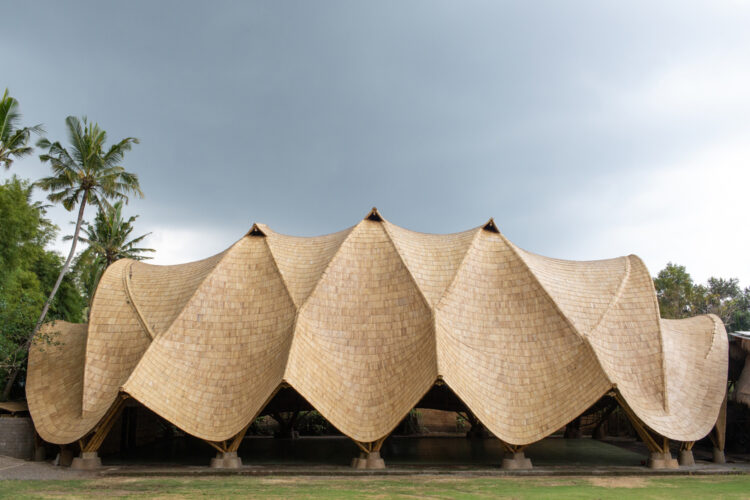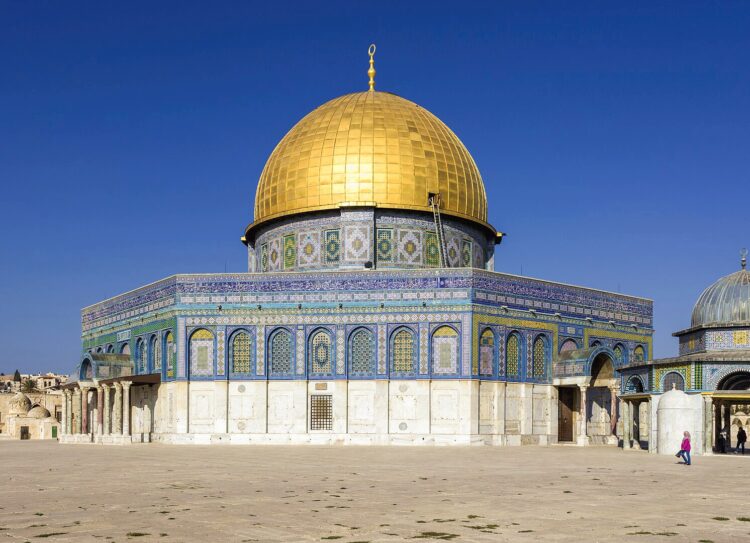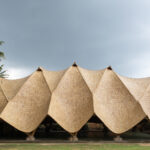Hi there! Hope you are doing well these days.
Bali’s rice fields are stunning! We all know it.
However, there is something else that caught my attention in Bali.
Their amazingly beautiful temples. The ‘Puras’.
I have visited a couple of them but the one that captured my attention the most was the ‘Pura Besakih’, or the ‘Mother Temple’. It is called like that because it was the first Hindu temple built in Bali and it is also located in the proximity of the highest mountain in the Island, the Mount Agung (3.031 meters high).
In summary, Bali, the famed “Island of the Gods,” is renowned for its breathtaking landscapes, vibrant culture, and deeply rooted spiritual traditions. Among the island’s most significant and mesmerizing aspects are its Pura Balinese temples, sacred spaces that embody the island’s unique Hindu heritage. Central to this network of temples is the Besakih Temple, also known as the “Mother Temple” of Bali, which stands as a testament to the island’s religious devotion and architectural prowess.
This rich heritage, similar to the Indian Hinduism (and many other ancient cultures around the world), is full of symbolism and perhaps unveils us secrets and hidden knowledge that untrained eyes are unable to capture. As in the words of the American writer:
“Truth is the crossroads of perspective.” (Stewart Stafford).
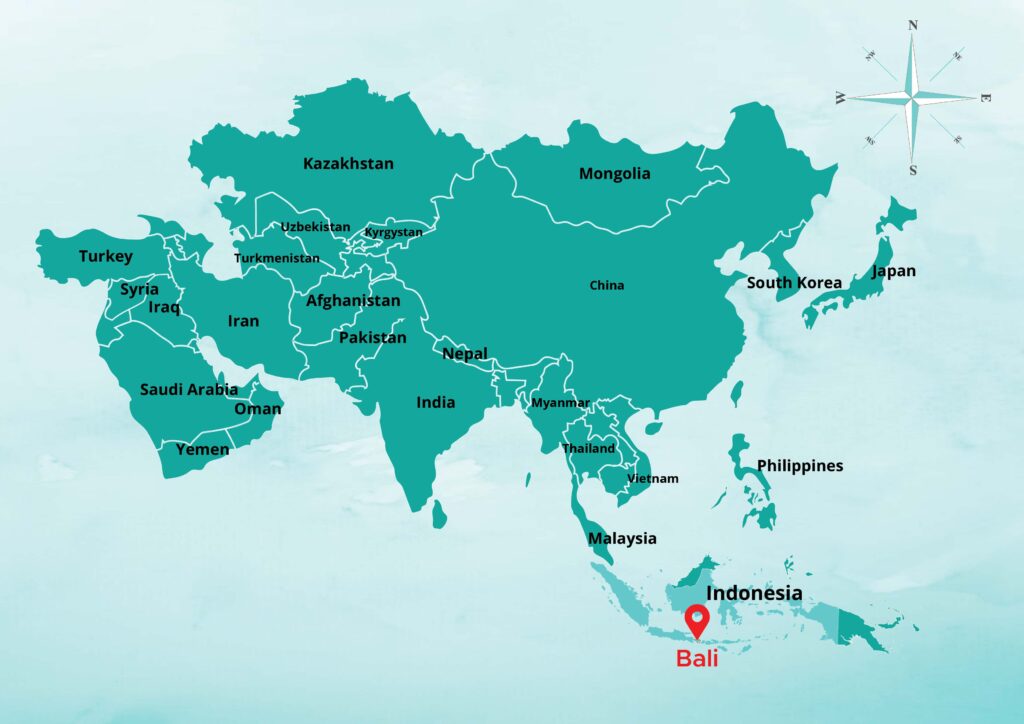
Map showing the location of the island of Bali within the Indonesian territory. Source: https://finnsbeachclub.com/guides/where-is-bali-on-a-map-is-bali-a-country/
The Essence of Pura Balinese Temples
Pura, in the context of Balinese culture, means “temple,” and these sacred sites are integral to the spiritual life of the Balinese people. Unlike temples in other parts of the world, Pura Balinese temples are open-air structures with distinct architectural features. They are designed to harmonize with the natural surroundings, reflecting the Balinese principle of “Tri Hita Karana,” which emphasizes the relationship between humans, nature, and the divine.
Each Pura is a microcosm of the cosmos, with its layout often reflecting the Balinese Hindu belief in the three realms: the underworld, the world of humans, and the upper world. The temples are usually built on elevated grounds, often on hillsides, and are adorned with intricately carved gates, towering meru (tiered shrines), and a variety of pavilions for different ceremonial purposes.
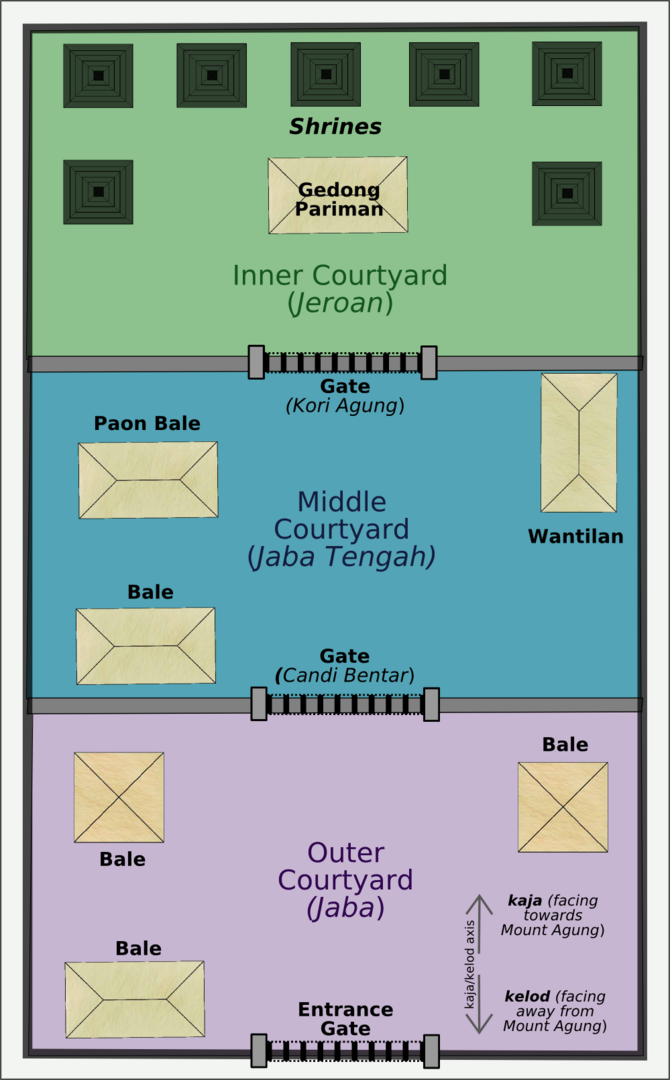
The Balinese temples’ standard floor plan with its inner courtyard, middle courtyard and outer courtyard. Source: https://en.wikipedia.org/wiki/Balinese_temple
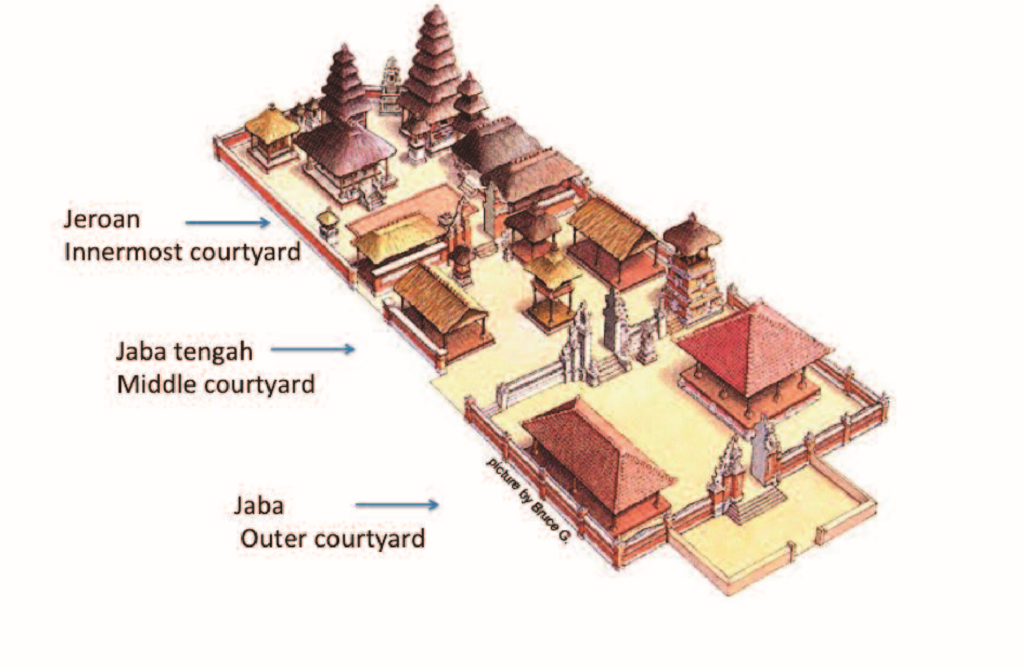
The Balinese temples’ standard 3D perspective with its inner courtyard, middle courtyard and outer courtyard. Source: https://encurtador.com.br/TxTKB
Besakih Temple: The Mother Temple of Bali
Perched on the slopes of Mount Agung, Bali’s highest and most sacred volcano, Besakih Temple is the largest and holiest temple complex on the island. Known as Pura Besakih, this sprawling sanctuary is a pilgrimage site for Hindus from all over Bali and beyond. The temple complex comprises over 80 individual temples, with Pura Penataran Agung being the central and most important one.
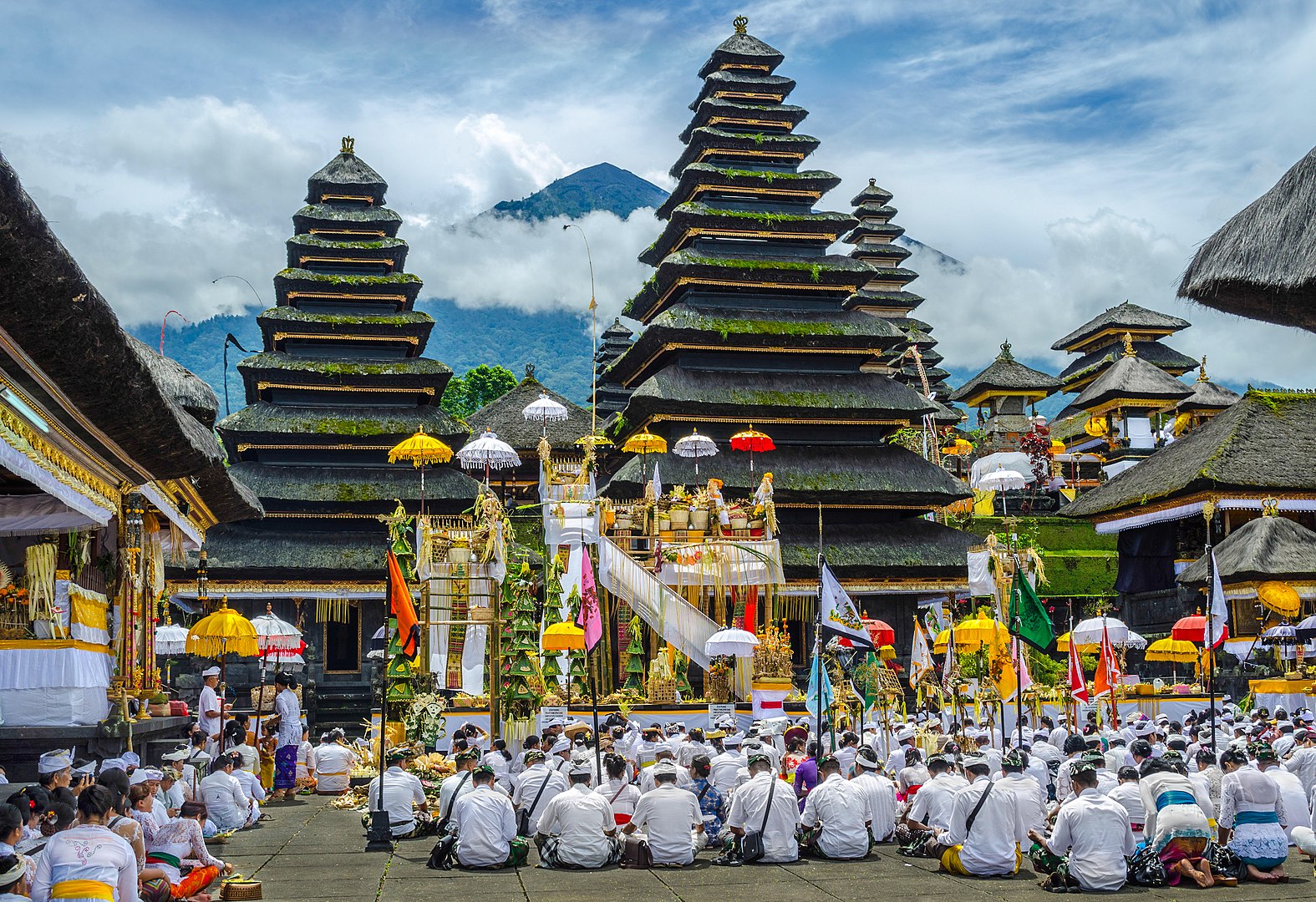
The Besakih Temple, the ‘Mother Temple’, with the Mount Agung in the background amidst a ceremony. Source: https://en.wikipedia.org/wiki/Besakih_Temple
Historical and Spiritual Significance
The origins of Besakih Temple date back over a thousand years, with its roots in prehistoric times when it was a center for animistic worship. As Hinduism took hold in Bali around the 8th century, the site evolved into a complex of Hindu temples. According to legend, the temple was founded by the saint Markandeya, who is credited with bringing Hinduism to Bali.
Besakih is considered the principal temple of the island because it houses shrines dedicated to the Hindu Trinity: Brahma (the creator), Vishnu (the preserver), and Shiva (the destroyer). It also serves as a unifying site where all Balinese Hindus, regardless of their specific village or family temples, come to worship during major religious festivals.
Architectural Marvel
The architecture of Besakih Temple is a magnificent blend of artistry and spirituality. The central temple, Pura Penataran Agung, features a majestic split gate, known as “Candi Bentar,” leading to the inner sanctum. Beyond the gate, visitors are greeted by a series of terraces and courtyards, each ascending higher towards the main shrine. The multi-tiered meru towers symbolize the sacred mountain and are dedicated to various deities.
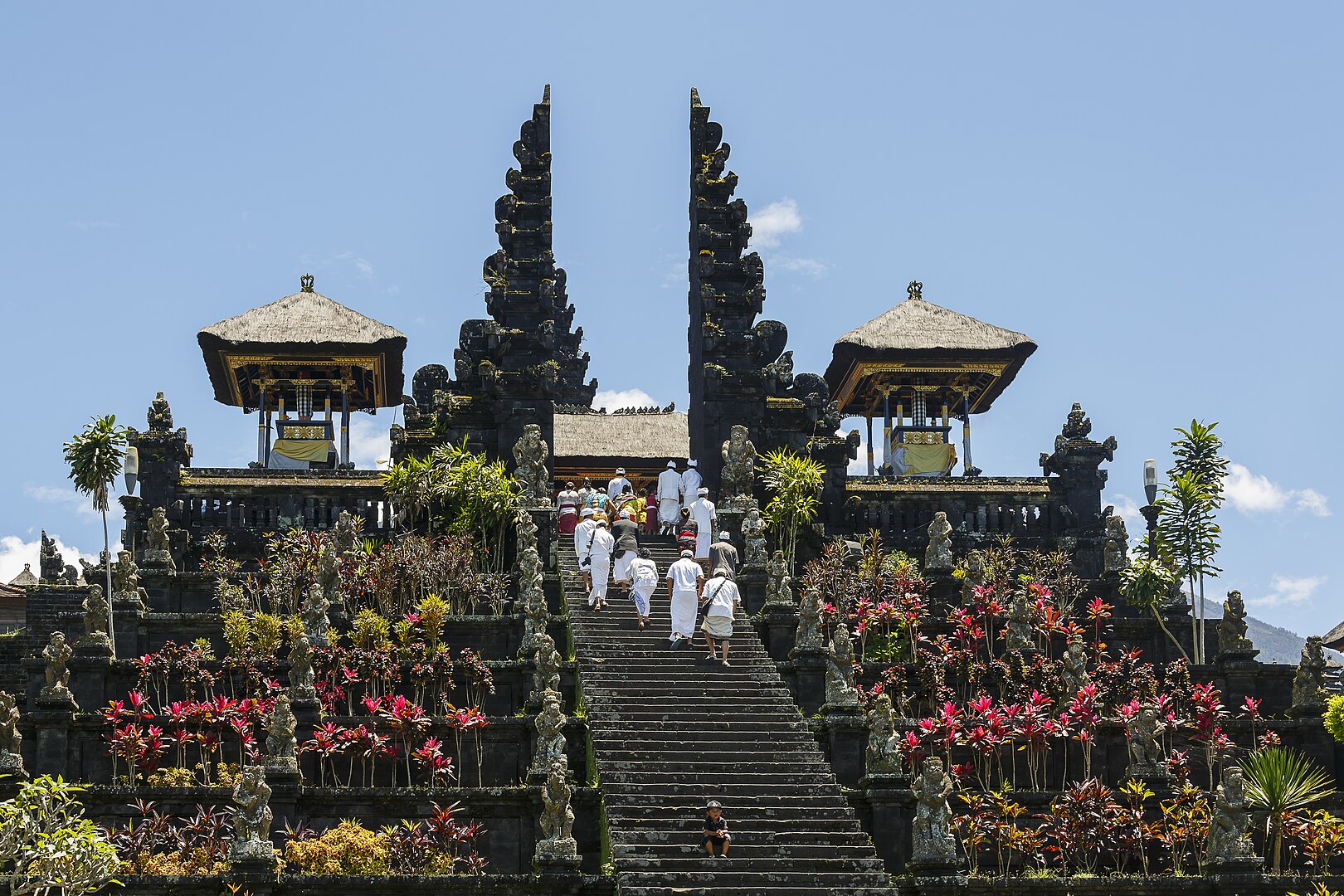
The Besakih Temple, the ‘Mother Temple’, with the candi bentar, split gates, on the top of the stairs. Source: https://en.wikipedia.org/wiki/Besakih_Temple
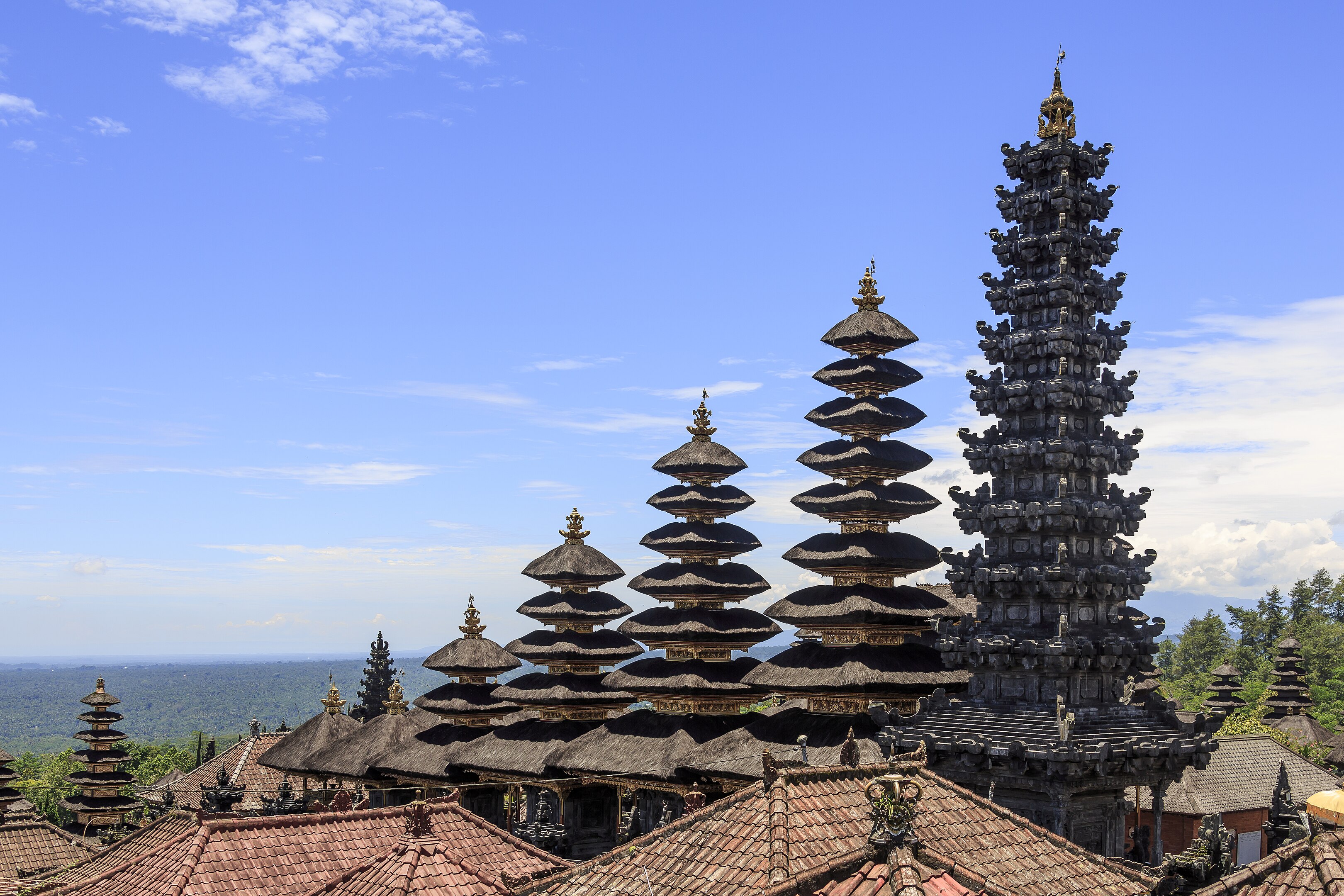
The ‘Meru Towers’ of the Pura Besakih, or Besakih Temple, as a reference to the sacred mountain for the Hindu, the Mount Meru (Mount Kailash). Source: https://en.wikipedia.org/wiki/Besakih_Temple
The multi-tiered meru towers refer to the very famous ‘Mount Meru’ or ‘Mount Kailash’, located in the borders of India, Nepal and Tibet. The ‘Mount Kailash’ is believed to be the Axis Mundi, in other words, the cosmic axis, world axis, centre of the world, the world tree. For some cultures it is the point where heaven meets earth.
However, it is also a dispute place for some of the most powerful military forces of our world, such as India, China and Russia. These countries have some sort of interest in an area that is holy for different religions and cultures and is also considered ‘centre of the world’. Perhaps, there are hidden secrets about the ‘Mount Kailash’ that most people are unaware of? Learn more about it through the article: ‘India On Verge Of Losing The Holy Kailash Range To China As Demands Grow Not To Abandon It Again?‘.
There is also one theory about the ‘Mount Kailash’ being a gigantic pyramid built by more advanced beings. According to Russian researchers, this giant pyramid would be only the centre of an entire complex of smaller pyramids (around 100 pyramids in total). They also propose that this area would be the centre of a supposed magnetic Earth grid system, which we have already mentioned in previous posts in our Blog. Check more about it on ‘The Stepped Monuments‘ and ‘The Star Forts‘.
You can find more about this very interesting theory on the video below (turn on the captions to watch it in other languages):

Perspective of the ‘Mount Meru’, or Mount Kailash. A sacred mountain for different cultures in the South East Asia region, India, Tibet and Nepal. Source: https://encurtador.com.br/skTdw
The layout of the temple follows the concept of “nawa sanga,” the nine cardinal directions, with each direction ruled by a specific god. This cosmological arrangement reinforces the temple’s role as a microcosm of the universe and a conduit for divine energy.
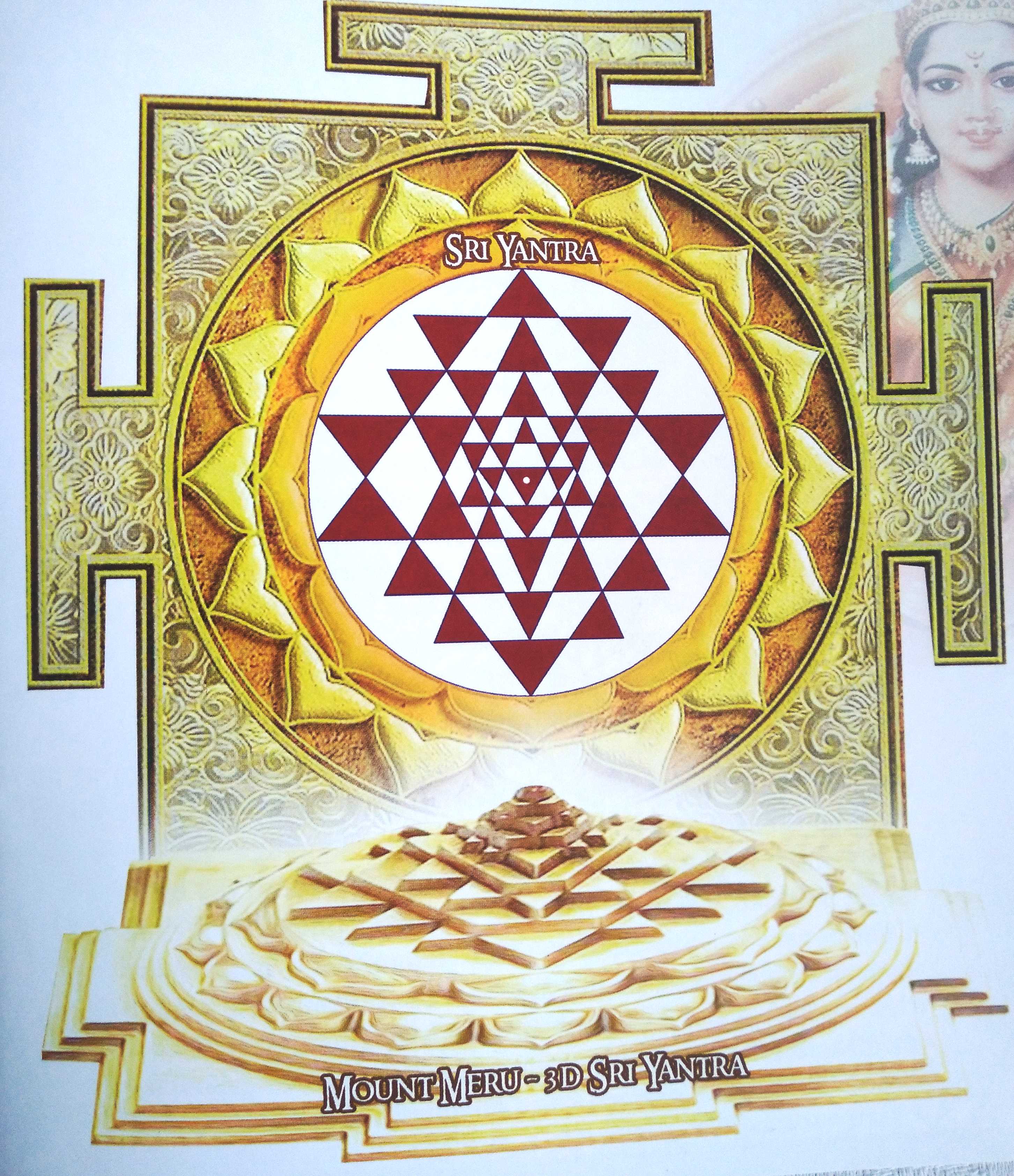
The ‘Sri Yantra’ hindu geometry representing the ‘nawa sanga’ concept with a deity in each of the eight directions (petals) and a central one (Shiva). In its 3D form ‘Sri Yantra’ represents Mt. Meru, the ‘world mountain’ or axis of the Universe. Source: VANTARI, Narada Dan. Understanding Sacred Geometry and the Flower of Life, 2019.
Other Notable Pura Balinese Temples
While Besakih Temple stands as the pinnacle of Balinese spiritual architecture, the island is dotted with numerous other pura, each with its unique charm and significance.
Pura Tanah Lot
One of Bali’s most iconic landmarks, Pura Tanah Lot, is perched on a rocky outcrop overlooking the Indian Ocean. This sea temple is dedicated to the sea gods and is renowned for its stunning sunsets. During high tide, the temple appears to float on the water, creating a mystical and awe-inspiring sight.
Pura Ulun Danu Bratan
Nestled on the shores of Lake Bratan, Pura Ulun Danu Bratan is a water temple dedicated to Dewi Danu, the goddess of lakes and rivers. The temple’s picturesque setting, with its pagoda-like meru reflected in the serene waters of the lake, makes it one of Bali’s most photographed sites.
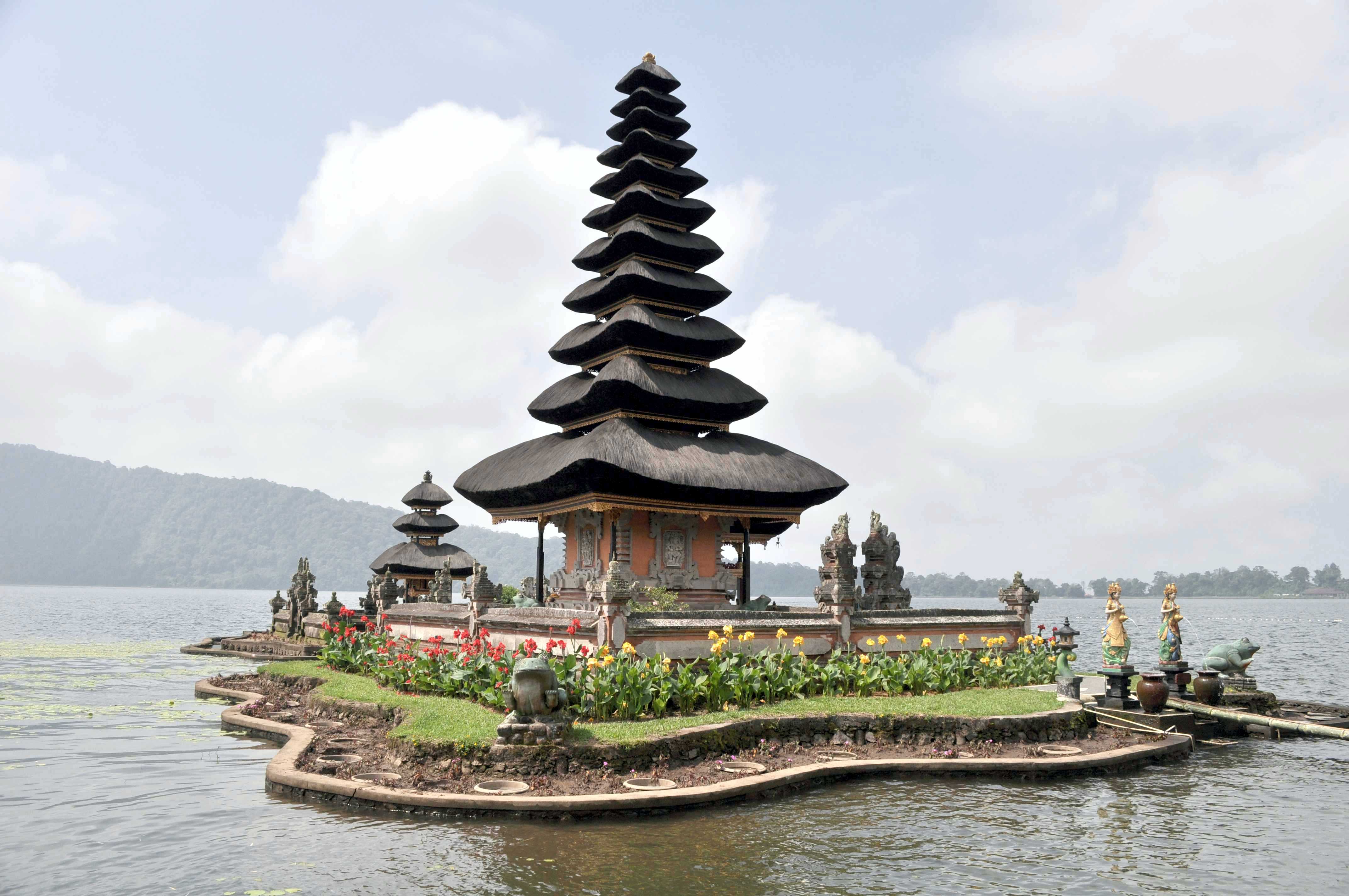
The Pura Ulun Danu Bratan, a Balinese stepped monument with 11 levels (meru tower). Source: The author’s personal gallery.
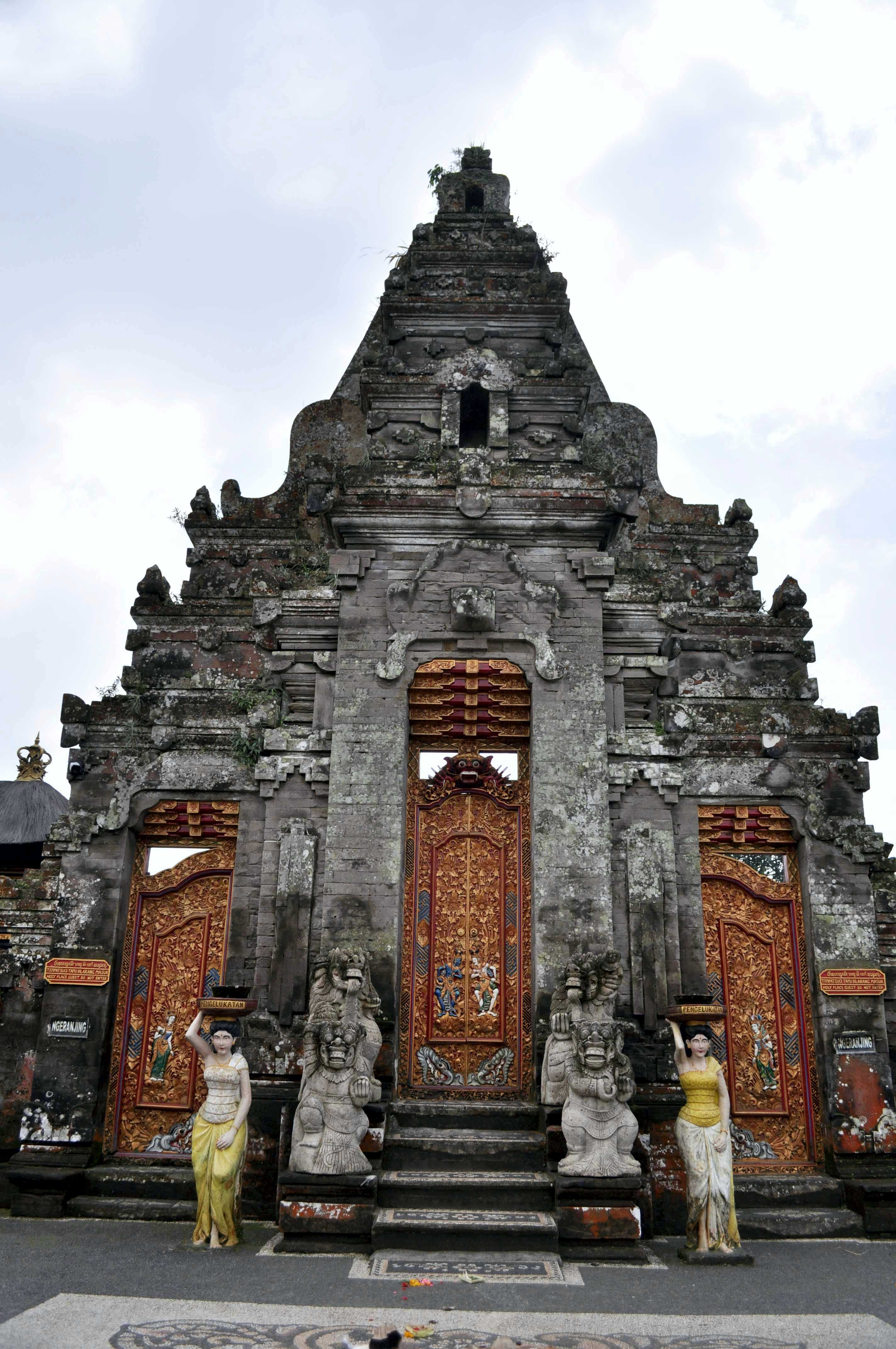
One of the gates found at the Pura Ulun Danu Bratan. Source: The author’s personal gallery.
Pura Luhur Uluwatu
Perched on a steep cliff overlooking the Indian Ocean, Pura Luhur Uluwatu is another sea temple that offers breathtaking views and a rich cultural experience. The temple is dedicated to the spirits of the sea and is also famous for its nightly Kecak dance performances, which dramatize the Ramayana epic against the backdrop of a stunning sunset.
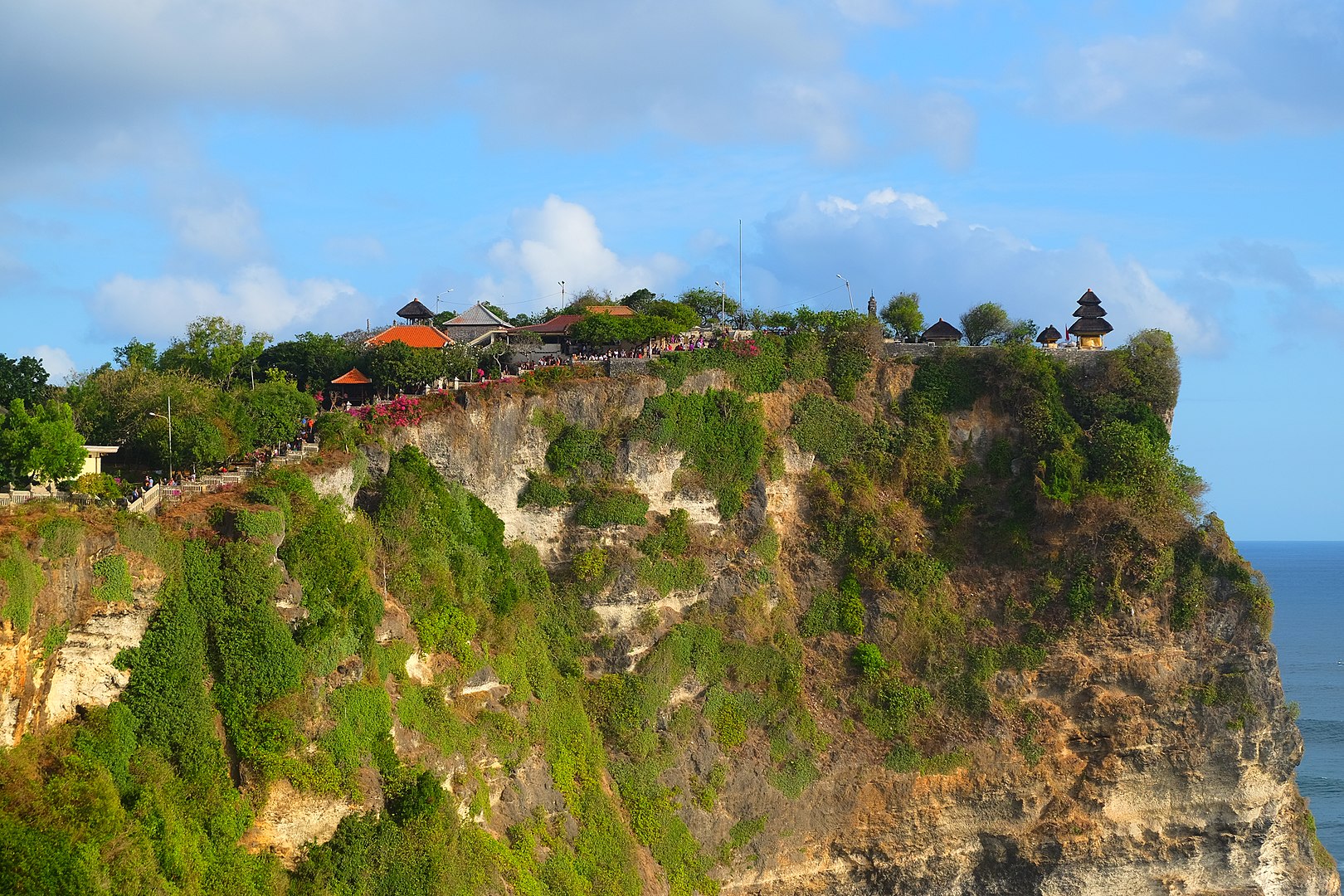
The Pura Luhur Uluwatu built on the edge of a cliff with stunning views also following the meru tower configuration. Source: https://en.wikipedia.org/wiki/Uluwatu_Temple
The Role of Temples in Balinese Culture
Pura Balinese temples are not merely architectural wonders; they are living, breathing centers of cultural and spiritual activity. The temples play a vital role in the daily lives of the Balinese people, serving as venues for various rituals, ceremonies, and festivals. These events are marked by vibrant processions, intricate offerings, traditional music, and dance, all of which are expressions of devotion and community spirit.
The temples also reflect the Balinese philosophy of life, which emphasizes balance and harmony. The concept of “Desa Kala Patra” (place, time, circumstance) guides the timing and nature of rituals, ensuring that they align with cosmic rhythms and local traditions.
Visiting Pura Balinese Temples
For visitors to Bali, exploring the island’s temples offers a profound insight into the heart of Balinese culture. Respectful behavior is essential when visiting these sacred sites. Modest attire, often including a sash and sarong, is required, and it is important to observe any temple-specific rules and customs.
In conclusion, the Pura Balinese temples, with Besakih Temple at their heart, offer a glimpse into a world where spirituality, art, and nature are inextricably linked. These sacred spaces invite both the faithful and the curious to connect with Bali’s rich heritage and to experience the island’s timeless devotion to the divine. Whether standing in awe of the grandeur of Besakih or witnessing the serene beauty of Ulun Danu Bratan, visitors are sure to be touched by the sacred spirit that permeates the Island of the Gods.
It also makes us wonder about what the ancients were trying to tell us through so much symbolism embedded in some of the most popular cultures in the world, the Hinduism and the Buddhism. Also confirmed by some scientific theories. I am sure that there are important messages to all of us which go much beyond the fantasy realm. It’s more than past the time to acknowledge it! ♥
Important Sources:
https://en.wikipedia.org/wiki/Besakih_Temple
https://en.wikipedia.org/wiki/Meru_Peak
https://en.wikipedia.org/wiki/Balinese_temple
https://www.asianstudies.org/publications/eaa/archives/
https://www.wondersoftibet.com/destinations/western-tibet/kailash/
https://medium.com/illumination/the-secrets-of-mount-kailash-d63b689af12


